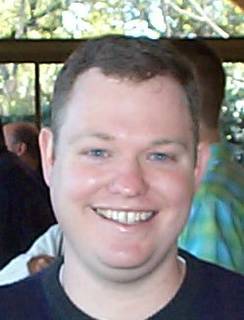We are going to do what today???
It was a rainy day in Vancouver and low overcast skies. I wasn't sure if my first "real" flight lesson was going to be cancelled. I was going to be disappointed if it did because I was really looking forward to all week. On the other hand, I did the reading that my instructor gave me, but I hadn't absorbed it yet. So maybe an extra week wouldn't be such a bad thing.
I get to Pearson Airfield. I had to bring in my birth certificate so I could prove I wasn't a terrorist. I guess terrorists don't have birth certificates from Hawaii. Once I get the paperwork is done, I head upstairs for some ground school.
I assumed that since my instructor had me read about straight and level flight, turns, climbs, and descents, that was what we were going to do today. We sit down and she starting talking about flying in the pattern...to takeoff and land. She started talking about how to make an approach for landing. What??? Did she have me confused with another student? We went over the basics of takeoffs and landings and went outside to do the pre-flight check.
We go outside to the plane and spend close to an hour doing the pre-flight check. The purpose of the pre-flight check is to find any problems with the plane on the ground and not in the air. As Don Rickles' character in Casino (one of my favorite films) said, "Better down here than up there, you know what I mean?" My flight instructor apologized a couple of times for taking so long to go over pre-flight, but I didn't mind at all. In fact, I would have been fine if pre-flight took the entire lesson (Okay...maybe not. I did want to get some flying in today.) I'm the type of person who has difficultly remembering things by rote memorization. If I can understand why something needs to be done, then I can remember when to do it. Carb heat for example. I didn't know any thing about a carburetor and so I didn't know why and when you need to apply carb heat. (By the way, I am not proud of the fact that I have no idea how an engine works.) After reading in my textbook about the venturi and how carb ice forms, not only did I learn when you need to apply carb heat, but why it's so important to prevent carb ice. I don't mind taking the time to understand what the static port does and why it needs to be clear, or why you need to manually inspect the fuel level (get this...the fuel gauges on the Cessna 150 are only accurate at empty.).
We finish the pre-flight check. We startup the engine and proceed to taxi. The instructor lets me taxi the plane. I hope nobody was watching because I'm sure it looked like I was under the influence. A couple of drinks might have straightened me out. We do our pre-takeoff check and taxi out onto the runway. She let's me work the throttle on takeoff. This is easy since we go full throttle. I'm flying the plane but she has her hand on the controls. I'm still not sure how much control I have of the plane. I'm so focused on flying that I can't really tell how much control she is exerting on the stick or the rudders.
We climb to about 600 feet and turn into the crosswind leg of the traffic pattern. We keep turning until the downwind pattern and climb to 1000 ft. We level off, speed up to about 100 m.p.h. and pull the throttle back to 2300 RPM. When we are abeam of the runway, we pull carb heat out (that carb heat study is paying off in spades!), pull the throttle back to 1500 RPM, pitch to 90 m.p.h. and lower the flaps 10 degrees. How do you know the flaps are lowered 10 degrees? You lower them for three seconds. (I assumed there was some sort of gauge that would tell you, but not on this plane.) We turn and go into the base. We pitch the plane to 80 m.p.h. and lower the flaps 10 more degrees (one-mississippi, two-mississippi, three-mississippi) and turn into the final. At this point, she takes control of the plane and lands. Then she immediately goes full throttle and we takeoff to do to this again. We do this three more times. Each time I have a better feel for what is going on. But I am nowhere near feeling comfortable with flying in the pattern.
I still have this, "I'm over my head" feeling, but I suppose that's why you spend over 20 hours of flight time with an instructor at your side.


1 Comments:
Wow, go Rod! That sounds really intense, especially when the plane's controls seem so touchy-feely. Do you listen to Adam Curry's podcast? He talks a lot about flying. I forget what certification he's getting.
Post a Comment
<< Home